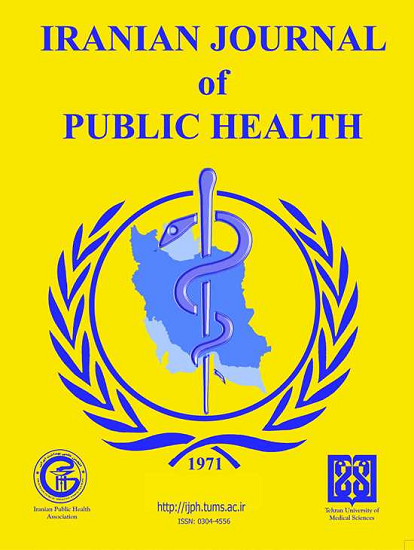Dissecting Masculinity: Transformative Strategies to Address Smoking in Indonesia
Abstract
Dear Editor,
Indonesia ranks among the world’s top countries in terms of cigarette use and production (1), deeply ingrained in society and prominently featured in sports sponsorships and various forms of media such as television, print, and technological platforms. Currently, the most notable trend is the prevalence of teenagers smoking cigarettes, with individuals aged 18 and over being the target audience for cigarette advertising. However, it is crucial to address the broader impact and cultural associations of smoking (2).
Cigarettes hold significance beyond their basic function, transcending gender categorizations. Translated into semiotic jargon, cigarettes serve as references that are not inherently associated with any specific biological gender. Their cultural meaning emerges when elevated to a semiotic level, functioning as signs within a system or practice of signification. At this level, we can trace associations between smoking and masculinity, with an oppositional relationship to femininity (3).
Smoking serves as a marker influencing the dynamics of masculinity throughout men’s lives, affecting their decisions influenced by their understanding of appropriate masculine behaviour. This dynamic relationship unfolds within specific contexts, emphasizing the importance of supportive environments that enhance and promote aspects of masculinity that are not reliant on smoking. In Indonesia, there is a prevailing belief that not smoking diminishes a man’s masculinity, exacerbated by cigarette advertisements associating smoking with a macho image (4). This perpetuates a trend of toxic masculinity, complicating efforts to combat smoking in Indonesia.
Indonesia’s government aims to reduce high cigarette usage by raising prices with more taxes. As of January 1, 2024, the Ministry of Finance of the Republic of Indonesia increased the tobacco excise tax rate by an average of 10%. This strategy is outlined in Minister of Finance Regulation Number 191 of 2022, the second revision of Minister of Finance Regulation Number 191 of 2021. The rule establishes excise tax rates for different categories of tobacco products, including cigarettes, cigars, hand-rolled cigarettes (klobots), and shredded tobacco(5). This approach assumes that as cigarette prices climb from annual tax hikes, smokers will have less motivation to smoke and may eventually choose to quit. Nevertheless, in reality, this is more complex. The relationship between cigarettes and smokers is multifaceted and goes beyond only the cost. Thus, budgetary pressure may only sometimes be successful in decreasing cigarette consumption. Further socio-economic study is required to provide a more comprehensive understanding of smoking habits (6).
The 2021 Global Adult Tobacco Survey (GATS) data, published by the Ministry of Health, indicates a rise in the adult smoking population by 8.8 million individuals, from 60.3 million in 2011 to 69.1 million in 2021. Indonesian society spends almost 64 trillion rupiah annually on cigarettes. The Indonesian Tobacco Atlas data from 2020 indicates that those with lower socio-economic status tend to consume more cigarettes (7).
Research conducted by the Center for Indonesia’s Strategic Development Initiatives (CISDI) shows that cigarette usage results in significant economic losses, particularly in healthcare and family systems, totalling 27.7 trillion rupiahs. This study demonstrates greater statistics than a prior study from 2015, which reported economic losses of 13.7 trillion rupiah owing to smoking-related health issues (8).
Studies suggest that increasing cigarette taxes can lower the rate of adult smokers but may not effectively decrease smoking inequalities in younger age groups. Research indicates that raising cigarette taxes is linked to reducing cigarette usage, but substantial tax hikes are required to have a major impact (9).
To reduce the number of smokers, policies need to be more comprehensive and grounded in solid scientific research. This includes several steps, such as increasing cigarette taxes, implementing specialized rehabilitation programs for smokers, and considering social and cultural factors associated with the link between smoking and masculinity. Firstly, raising cigarette taxes has proven effective in reducing cigarette consumption, as higher prices can deter consumers, particularly among lower to middle-income groups. This policy is based on behavioural economics theory, which indicates that higher prices reduce demand for a particular product, including cigarettes. Secondly, specialized rehabilitation programs for smokers can assist individuals who want to quit smoking by providing necessary psychological, medical, and social support. These programs can be tailored to individual needs and may include nicotine replacement therapy, counselling, and other proven approaches to help smokers quit.
Additionally, it is important to consider social and cultural factors influencing smoking behaviour. One of these factors is the association of smoking with masculinity ingrained in popular culture. Changing smoking behaviour should involve altering social norms that reinforce this association. This can be achieved through educational campaigns raising awareness about the negative impacts of smoking and promoting alternative concepts of masculinity not linked to smoking. Moreover, resocialization efforts, such as those described by Obstetrics and Gynecology Specialist Budi Wiweko, who stated that smoking can reduce a man’s masculinity, should also be considered. He explained that smoking generates Reactive Oxygen Species (ROS) that produce free radicals in the body, damaging sperm genetic material. Consequently, damaged DNA sperm are unable to fertilize eggs. Smoking habits also damage blood vessels, including those in the penis, leading to erectile dysfunction. Furthermore, smoking can cause men to lose their Adam’s apple if they develop vocal cord cancer. Thus, not smoking can make men more masculine (10).
| Files | ||
| Issue | Vol 54 No 2 (2025) | |
| Section | Letter to the Editor | |
| DOI | https://doi.org/10.18502/ijph.v54i2.17915 | |
| Keywords | ||
| Cigarette Use Indonesia Teenage Smoking trends Masculinity and Smoking Tobacco Excise Tax Indonesia Health impacts | ||
| Rights and permissions | |

|
This work is licensed under a Creative Commons Attribution-NonCommercial 4.0 International License. |





